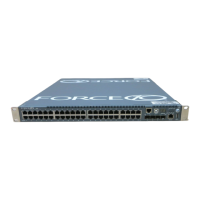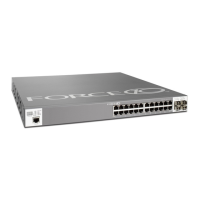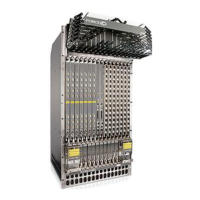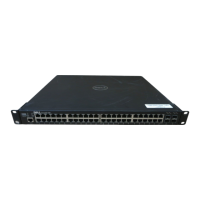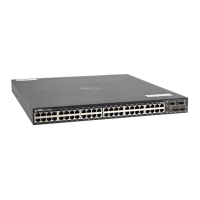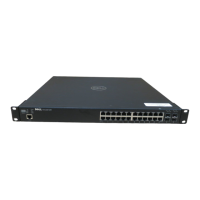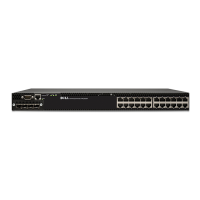• + = (plus) the sequences in a pattern (1 or more sequences).
• ? = (question mark) sequences in a pattern (either 0 or 1
sequences).
NOTE: You must enter an escape sequence (CTRL+v) prior
to entering the ? regular expression.
• [ ] = (brackets) a range of single-character patterns.
• ( ) = (parenthesis) groups a series of pattern elements to a
single element.
• { } = (braces) minimum and the maximum match count.
• ^ = (caret) the beginning of the input string. If you use the
caret at the beginning of a sequence or range, it matches on
everything BUT the characters specified.
• $ = (dollar sign) the end of the output string.
Command Modes
• EXEC
• EXEC Privilege
Command History
Version 8.3.11.1 Introduced on the Z9000.
Version 8.3.7.0 Introduced on the S4810.
Version 7.8.1.0 Introduced on the S-Series.
Version 7.7.1.0 Introduced on the C-Series.
Usage
Information
The following describes the show ip bgp regexp command shown in the Example
below.
Field Description
Network Displays the destination network prefix of each BGP route.
Next Hop Displays the next hop address of the BGP router. If 0.0.0.0 is listed in
this column, then non-BGP routes exist in the router’s routing table.
Metric Displays the BGP router’s metric, if assigned.
LocPrf Displays the BGP LOCAL_PREF attribute for the route.
Weight Displays the route’s weight
Path Lists all the AS paths the route passed through to reach the
destination network.
Example (S4810)
FTOS#show ip bgp regexp ^2914+
BGP table version is 3700481, local router ID is 63.114.8.35
Status codes: s suppressed, S stale, d damped, h history, *
valid, > best
Path source: I - internal, a - aggregate, c - confed-external,
r - redistributed, n - network
Origin codes: i - IGP, e - EGP, ? - incomplete
Network Next Hop Metric LocPrf Weight Path
*>I 3.0.0.0/8 1.1.1.2 0 100 0 2914 1239 80
i
413

